Outforia Quicktake: Key Takeaways
- Wolves are the largest living species of canine, found in the northern regions of North America, Europe, Asia, and North Africa.
- There are three species of wolves: gray, red, and eastern, with over 40 subspecies.
- Gray wolves are the largest, reaching 4 to 6.56 feet (120 to 200 cm) long and weighing between 40 to 175 lbs (18 to 79 kg).
- Wolves live in packs and are monogamous, with the alpha male and alpha female breeding and caring for the pack.
- Humans and wolves have a complex relationship, with domestic dogs descending from the same ancestor as wolves.
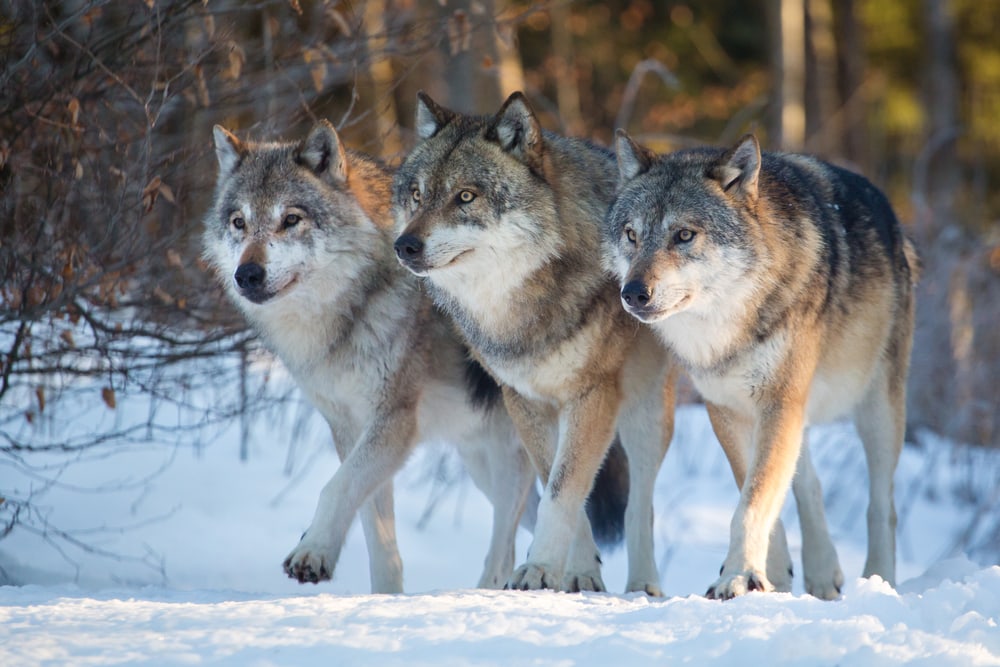
Wolves are pervasive in pop culture and mythology. It doesn’t matter where you look, from Little Red Riding Hood to religious scriptures. You’ll find wolves across nearly every culture in the world.
It’s impossible to write down the history of humans without including the evolution of wolves. But how big do they get, where do they live, and what makes wolves special?
We’ll discuss how big wolves can actually get, the relationship between people and wolves, and all of the most important things to know about wolves.
Everything You Should Know About Wolves
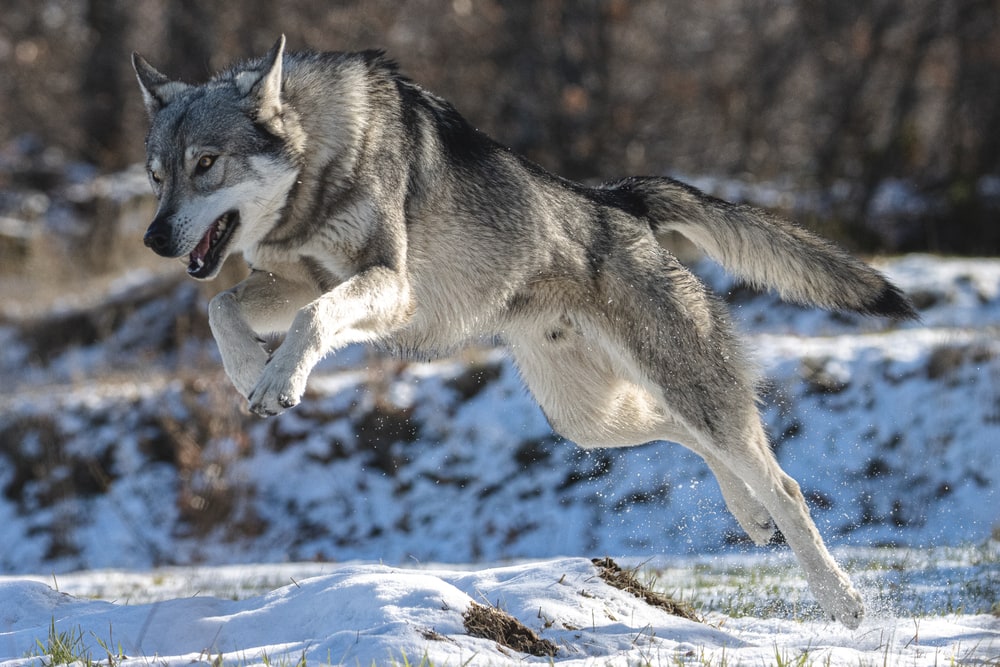
Wolves are the largest living species of canine in the world. They’re closely related to all other canines like hyenas, foxes, jackals, coyotes, and even domestic dogs. You can find wolves throughout the northern regions of North America, Europe, Asia, and even North Africa.
Wolves live in family groups called packs. In rare cases, packs can number around thirty.
Most of the time, a pack will only have around ten members. All packs have a leader who is referred to as the alpha male. The alpha male and alpha female wolves breed and care for the rest of the pack, usually their children.
Wolves are monogamous. They stay together until one of the mating pair dies, then the living wolf will find another mate. When wolves reach sexual maturity, they leave the pack searching for a mate to start their own. It’s rare for wolves to inbreed, only when finding other wolves isn’t possible.
A pack of wolves will claim an area of land called their territory. It’s where they live, hunt, sleep, and play. Even in places with multiple wolf packs, it’s rare for wolves to cross into another pack’s territory. They will fight to defend their land.
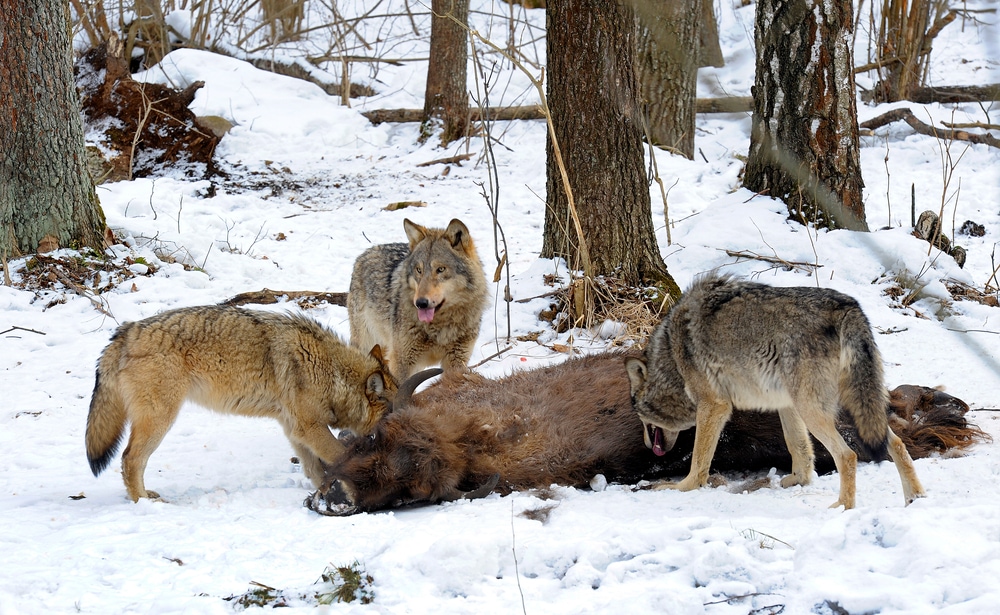
All wolves are carnivores and feed on different prey species depending on their size and the pack’s strength. Wolves hunt together using group hunting strategies to help bring down larger prey. Still, smaller groups tend to have more success.
Most people think of wolves as cold-weather, forest predators. They actually do well in several different environments. Forests, swamps, grasslands, tundras, deserts, and mountains are all good habitats for wolves.
There are three species of wolves: gray, red, and eastern. Within those species are over 40 subspecies.
Gray wolves are the most common species of wolf and also the largest. They can be anywhere from 4 to 6.56 feet (120 to 200 centimeters) long and weigh between 40 to 175 lbs. (18 to 79 kilograms).
Red wolves are smaller, reaching 4.5 to 5.5 feet long (137 to 168 cm) and weighing between 50 to 80 lbs (23 to 36 kg).
So How Big Are Wolves?
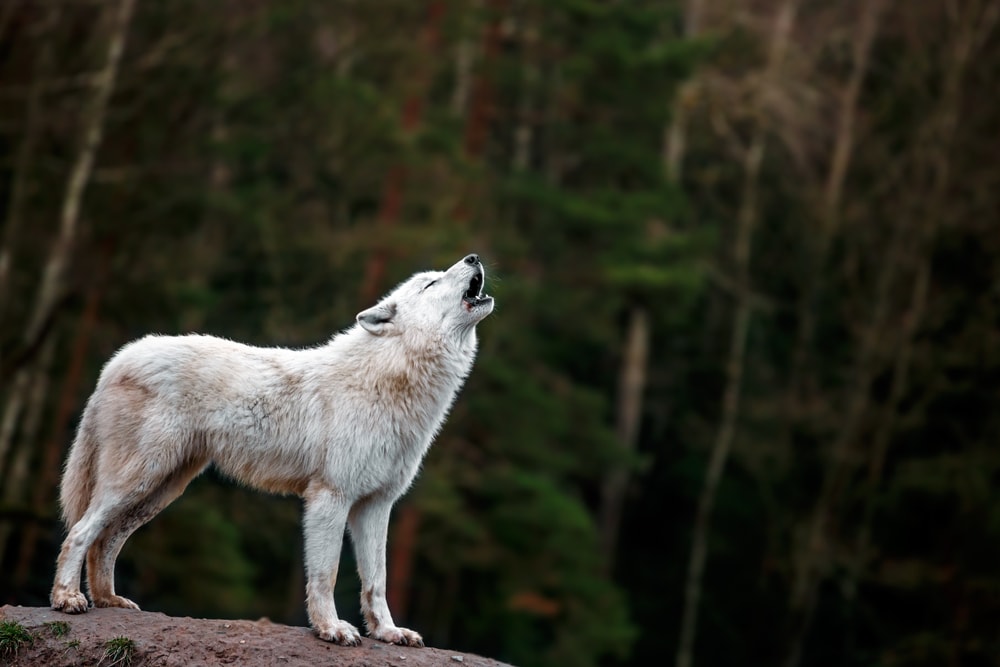
A lot of people think wolves are just big dogs. No matter how closely wolves are related to dogs, they’re distinctly different types of animals.
Wolves tend to have slimmer, more streamlined bodies than dogs. Dogs are stockier and wider, while wolves are leaner and sleeker. Wolves also have longer legs and bigger paws to help them move faster.
Wolves also have larger heads and jaws than most domestic dogs.
An English mastiff may weigh over 200 pounds (90 kg), while the largest wolves weigh around 175 pounds (80 kg). Generally, wolves will be much larger and fiercer than the average dog.
You may also like: 27 Wonderful Types Of Wolves (Facts, Photos & More)
History Of Humans And Wolves
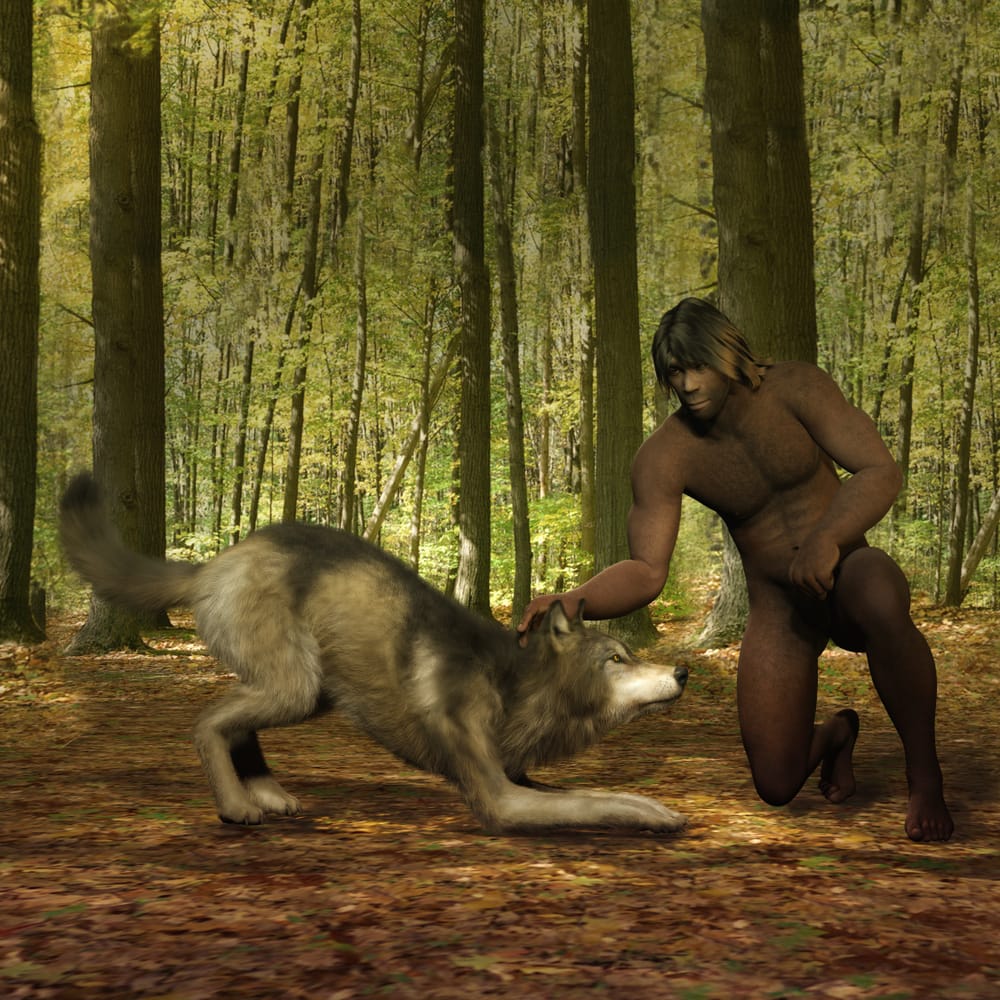
Humans have a complex relationship with wolves. The animals we know today as dogs are descendants of the same ancestor as wolves. Some people think they’re just big dogs, but that’s a mistake. Wolves are cunning, intelligent, ferocious, and wild animals.
In many places, wolves have been killed off entirely by people. Across much of Europe, wolves are no longer found in regions they used to flourish in. But why is that?
Wolves are predators with incredible hunting skills, but they’re also opportunists. They tend to go after weak, sick, or young animals. Livestock is an easy source of food for wolves, so when people settle in areas where wolves live, their livestock gets eaten.
It’s no wonder that people don’t like that happening, so the local wolves get hunted down and eliminated. This has happened across North America, Europe, and Asia.
Wolves have been reintroduced to areas with great success, such as Yellowstone National Park. Since their reintroduction, no attacks on humans have been recorded.
In the wilderness, wolves try to avoid interacting with people as much as possible. That being said, when people move to remote areas, they influence wolf populations. Livestock, trash heaps, and leftovers from hunts all attract wolves.
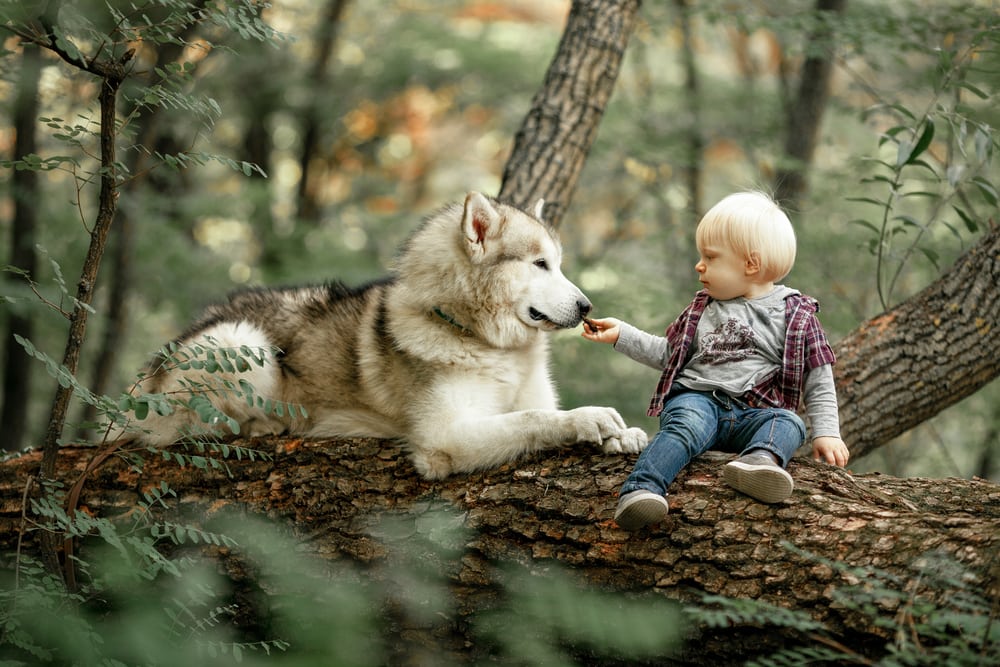
So how did we end up having dogs?
Somewhere along the way, our evolutionary history and that of wolves got intertwined. Wolves are social creatures and are capable of forming bonds with humans. I will say here, do not try to do this.
We aren’t sure about the location, timing, or cause of wolf domestication. One theory is that wolves domesticated themselves. Humans left behind scraps from cooking fires and hunts, with wolves following and feeding on those scraps.
Another suggests a slow process with humans tossing food to wolves and playing with them.
While we aren’t sure how wolves grew tame, we can be sure that they did. Their descendants today are incredibly popular pets, are great working animals, and provide all kinds of support to people.
Wolves as species are not considered endangered today. Most areas of the world have protections in place to curb hunting, and wolf populations are relatively stable.
You may also like: 16+ Strongest Bite Force In The Animal Kingdom
Wolves In Mythology
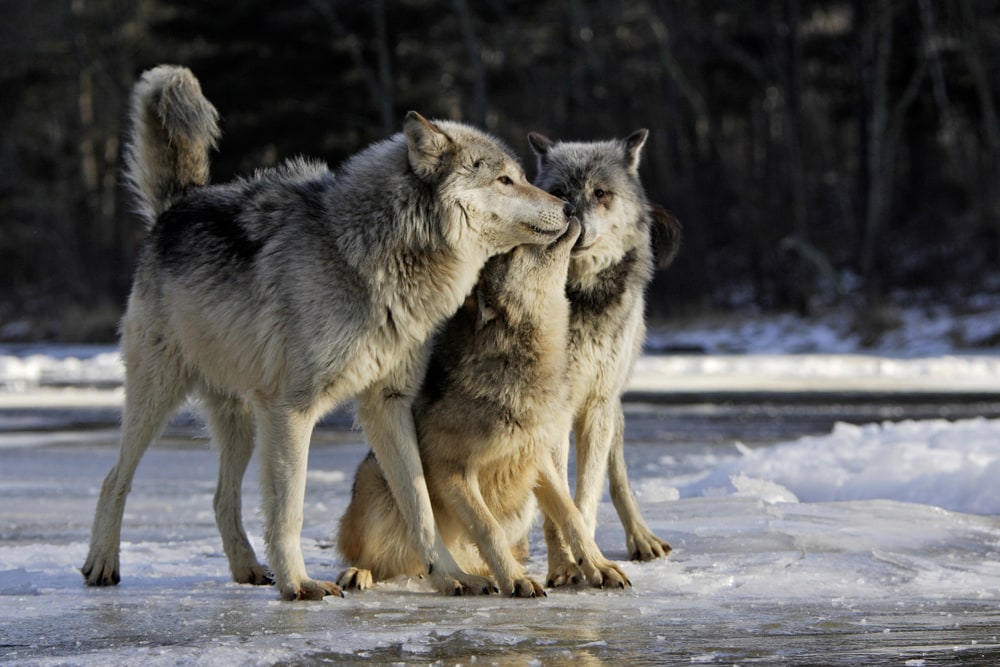
The close relationship between humans and wolves has led to their frequent appearance in mythology.
Norse mythology had multiple titular wolves. Skol and Hati were the wolves that chased the sun and moon across the sky. This was how they explained the movement of the heavens. If the wolves caught the planet, an eclipse began, giving that an explanation too.
Fenrir is the most famous wolf in the Norse mythos. The son of Loki, Fenrir, was a massive wolf so powerful that all gods feared him. Because of their fear, they tricked him into chains he could not break.
There are different versions of the story of how Fenrir was chained and what he will do. The most common one is that when Ragnarok begins, Fenrir will break free from his chains, devour the sun, and kill Odin.
In Roman mythology, Romulus and Remus were nursed by a great wolf and are connected to Mars, the god of war. Wolves became the symbol of Rome since the she-wolf nursed the city’s founders.
In the Christian faith, wolves are often referenced as symbols of greed and destructiveness.
You may also like: Arctic Animals List: Who Lives At The North Pole? (Pictures And Facts)
Wolves FAQs
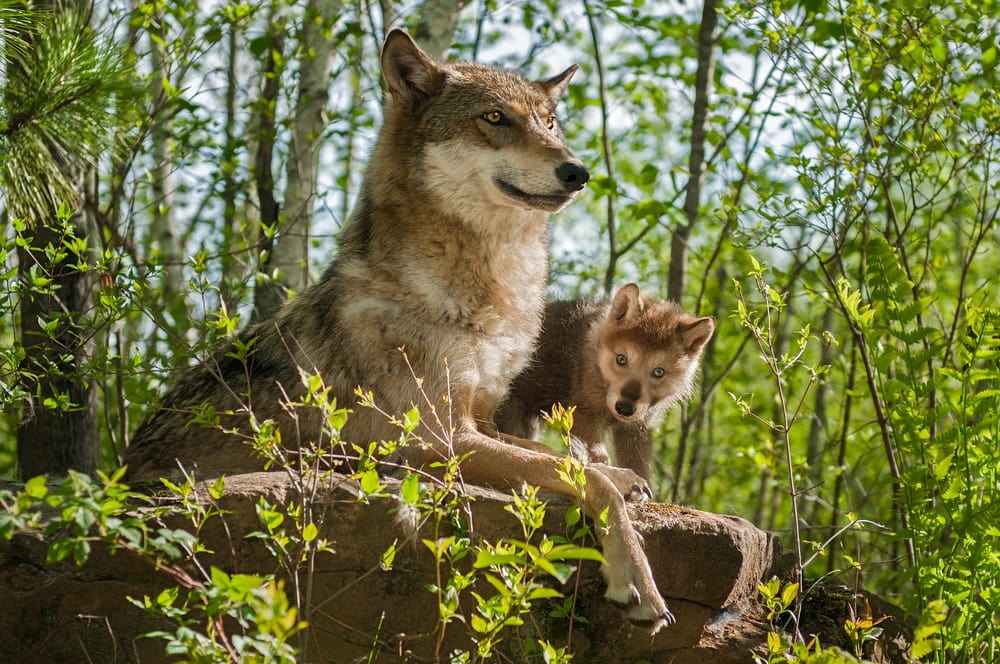
How Frequently Do Wolves Attack Humans?
Wolf attacks on people are incredibly rare. Between 2002 and 2020, there were a total of 26 fatal attacks around the world. Of those 26, 14 were because the wolves had contracted rabies.
Of the total 489 wolf attacks during the same time, rabies accounted for 380 of them. Again, only 26 out of those 4809 attacks were fatal.
Wolves tend to live in remote areas and avoid humans whenever possible. They’ve learned that people mean trouble for them. Unfortunately, our paths still cross, even in remote places.
It’s exceedingly rare and unlikely for a wolf to attack a human.
How Much Bigger Than Dogs Are Wolves?
It depends on the type of dog and how well-fed the wolf is. On the largest end, domestic dogs outweigh the biggest wolves. That’s mostly because wolves survive in the wild and have constant exercise, but still.
An average how dog weighs less than 50 pounds (22 kg). While a wolf might weigh a similar amount (around 45 pounds), those are the smallest wolves out there. The larger wolves are around four times as big as an average pet dog, and that doesn’t begin looking at their length, height, or head size.
The simple answer is that most of the time, wolves are a lot bigger than dogs.
What’s the Biggest Wolf Ever?
The biggest wolf ever (that we know about) is the dire wolf. Their average size was around the same as the largest gray wolves today. We aren’t sure how big they could have grown, but they likely weighed around the same as massive gray wolves at just under 200 pounds (90 kg).
In terms of body size, dire wolves were huge. They would have stood over 3 feet tall at the shoulder (1 meter).
Are Direwolves Real?
Yes, dire wolves are real. They are the largest known wolf species ever, though they do not exist today. Their species went extinct around 9,500 years ago.
Can Wolves And Dogs Interbreed?
Wolves and dogs can interbreed. Most canines are what is called interfertile. Interfertile means that the two groups of animals can produce offspring and that their offspring can also produce offspring.
Wolf-dog projects try to create breeds of dogs that look like wolves but have the attitude of dogs. It’s a selective breeding process to bring out the traits that give the dogs the appearance of a wolf.
They’re very popular, but they are not for beginner dog owners.
Wolves can hybridize quite easily. There are quite a few populations of wolf-coyote hybrids around the world. There’s also still quite a bit of debate about whether the eastern wolf is a hybrid of wolves and coyotes.
You may also like:

Coyotes in Texas | Coyotes in NJ | Wolves in Idaho | Wolves in Yellowstone









